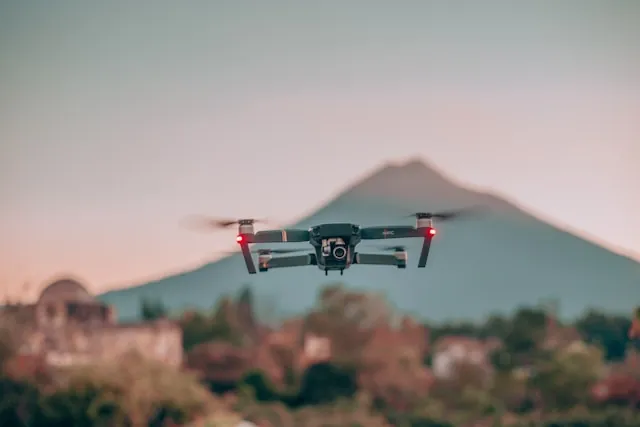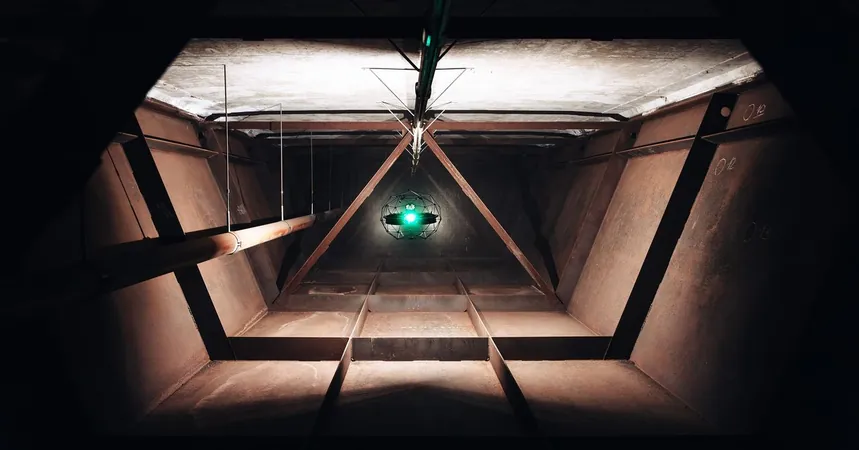
Revolutionary Bacteria Can Signal from 90 Meters Away: Game Changer for Agriculture and Environmental Monitoring!
2025-04-14
Author: Michael
Engineered Bacteria: A Sensing Breakthrough
What if bacteria could act as high-tech sensors, alerting us to environmental changes from nearly 90 meters away? MIT engineers have turned this futuristic dream into reality by engineering bacteria to emit colorful signals that can be detected by hyperspectral cameras. This groundbreaking technology could transform agricultural monitoring and environmental safety.
How It Works: A Colorful Signal
Under the direction of Christopher Voigt, PhD, at MIT's Department of Biological Engineering, researchers designed two types of bacteria to release unique molecules that glow with specific wavelengths of light. By capturing these colors through hyperspectral imaging, we can now decode bacterial signals from a distance. According to Voigt, "If you’re standing next to it, you can’t see anything by eye, but from hundreds of meters away, you can get the information with specific cameras.”
Versatile and Universal Applications
One of the most exciting features of this technology is its adaptability. As Yonatan Chemla, PhD, notes, "You can plug and play whichever sensor you want." This means these engineered bacteria could be used to detect a variety of pollutants, nutrients, or hazards in the environment, potentially transforming how we monitor the Earth's health.
From Lab to Landscape: Tracking Environmental Signals
In their study published in *Nature Biotechnology*, the researchers presented their hyperspectral reporter (HSR) technology, claiming it could revolutionize monitoring methods for countless applications—from mapping pollution in hazardous waste sites to assessing soil health in agriculture.
Going Long-Distance: The Hyperspectral Advantage
Traditional methods for detecting bacterial signals often fall short when it comes to long distances. This new approach allows for scanning both microscopic and planetary scales, using hyperspectral cameras that provide detailed spectra of reflected light, enabling precise monitoring even from the sky!
Future Prospects: A Variety of Applications
Currently, hyperspectral cameras are utilized for various applications, including detecting radiation near Chernobyl and monitoring plant health for signs of disease. The potential for these engineered bacteria is vast, with uses in agriculture, environmental safety, and even military applications like landmine detection.
Next Steps: Regulatory Hurdles Ahead
As promising as this technology is, it must pass regulatory scrutiny before real-world applications can begin. Voigt and Chemla are actively engaging with the U.S. Environmental Protection Agency and the U.S. Department of Agriculture to navigate the complex landscape of safety, risks, and benefits associated with deploying these biological sensors.
The Future is Bright: Monitoring the Earth Like Never Before
With further development and refinement, these hyperspectral reporters could not only enhance agricultural practices but also safeguard our environment more effectively. The team envisions a future where not only bacteria but also plants and even animals could be engineered to help us monitor the delicate balance of our ecosystems.









 Brasil (PT)
Brasil (PT)
 Canada (EN)
Canada (EN)
 Chile (ES)
Chile (ES)
 Česko (CS)
Česko (CS)
 대한민국 (KO)
대한민국 (KO)
 España (ES)
España (ES)
 France (FR)
France (FR)
 Hong Kong (EN)
Hong Kong (EN)
 Italia (IT)
Italia (IT)
 日本 (JA)
日本 (JA)
 Magyarország (HU)
Magyarország (HU)
 Norge (NO)
Norge (NO)
 Polska (PL)
Polska (PL)
 Schweiz (DE)
Schweiz (DE)
 Singapore (EN)
Singapore (EN)
 Sverige (SV)
Sverige (SV)
 Suomi (FI)
Suomi (FI)
 Türkiye (TR)
Türkiye (TR)
 الإمارات العربية المتحدة (AR)
الإمارات العربية المتحدة (AR)